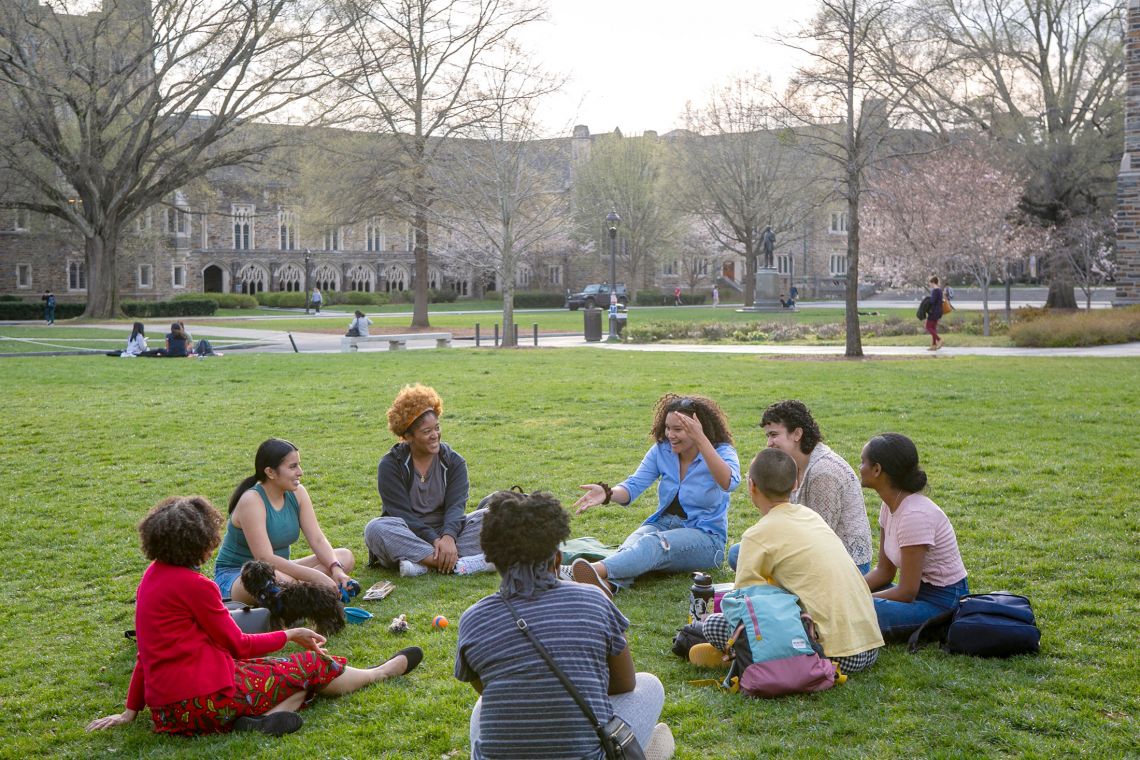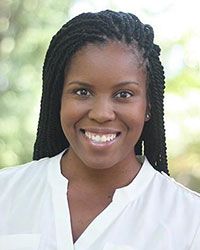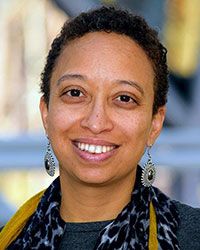
There’s a lot of talk throughout higher education about how to attract students of color and students without a legacy background into graduate studies and academic careers, particularly in fields such as the social sciences, arts and humanities.
While other programs have been seeking solutions, the Mellon-Mays Undergraduate Fellowship has been doing this work successfully for several decades, benefiting both Duke faculty and students.
 Now, Duke is looking to grow the program here and open its potential to additional students.
Now, Duke is looking to grow the program here and open its potential to additional students.
“This program takes students who are very talented but have no idea of what is involved in an academic career, and it gives them the skills to take that first step,” said new fellowship director Candis Watts Smith, associate professor of political science.
“Through mentoring, research experiences and academic conferences, young scholars learn how to write research, do public speaking, build a community of supporters, and even how to be a good mentee,” Smith said. “There’s not a lot of places where students learn how to ask for help, how to get feedback. Even just how to ask the right questions. You get the important research opportunities, but you also get underrated skills that you didn’t even know you needed that will guide you through college and afterwards.”
 “If you are a faculty member, a Mellon-Mays-trained student really stands out, you want to mentor them,” said Tsitsi Jaji, associate professor of English and outgoing director of the fellowship program at Duke. “These students arrive having gone down a path that prepares them so well for graduate school.”
“If you are a faculty member, a Mellon-Mays-trained student really stands out, you want to mentor them,” said Tsitsi Jaji, associate professor of English and outgoing director of the fellowship program at Duke. “These students arrive having gone down a path that prepares them so well for graduate school.”
Duke is one of 48 universities and three consortiums that participate in the program. Open to juniors and seniors, the Mellon-Mays fellowship recruits students in the arts, humanities and social sciences to enter graduate studies. It prioritizes students from underrepresented minority groups and 1G and other non-legacy students, making it an important pipeline for diversifying higher education. At Duke, the program is supervised by the Office of University Scholars and Fellows.
Jaji and Smith speak about Mellon-Mays from experience: They were Mellon-Mays fellows as undergraduates. When they joined the Duke faculty, they maintained their connection to the program to offer a new generation of students the support that the program gave them.
Smith, who did her undergraduate and Ph.D. study at Duke, said that network of support is what makes the Mellon-Mays program stand out from other fellowships.
“There’s something about having community, and being socialized in a space where people are looking out for each other,” Smith said. “The program is not competitive, and in academe, it seems for most students that everything is a competition.
“It connects you with people outside of your field. Some of my most valuable collaborations were with Mellon-Mays fellows from different disciplines. That’s a type of collaboration that isn’t common in other programs, and that interdisciplinary collaborations provides a different kind of learning for students.”
Jaji said this support is particularly valuable in building confidence in Mellon-Mays students who don’t have a family history of higher education experience and graduate study in particular. “Some of these students may not be confident they belong in higher education, but Mellon-Mays gives them objective data that people believe in them, and that faculty will listen to them.
There are ripples of support,” Jaji said. “At Duke you have your core group, the other fellows and your faculty mentors. Then you add people you meet at Mellon-Mays conferences. Then you add people you meet in graduate school and at additional conferences. This entire network is there for you throughout your career. I still stay in touch with the people I met through Mellon-Mays as an undergraduate.”
The program works even for students who use their graduate studies for careers outside of higher education. Susanna Temkin used her fellowship from Duke for graduate study in art history, which led to a career in museum curation. She’s now curator for El Museo del Barrio, a prominent museum in New York focusing on Latin American artists in the United States.
At Duke, Temkin was mentored by Sarah Schroth, who was then curator at the Nasher Museum. Together the two worked on the museum’s extraordinary exhibit of Spanish art from the reign of Phillip III.
That research experience was, in her words, “amazing,” but just as important was the meetings with faculty and peers that she said taught her “skills outside of the classroom about how to dedicated yourself to research career.”
Those conversations with peers and faculty influenced her decision to do curatorial work in museums. She said those meetings immersed her in the program’s goal of raising voices from underrepresented groups.
“I feel the goal of Mellon-Mays is what my profession is all about,” Temkin said. “I came out wanting to uplift the artistic voices from my Latinx community, which is so diverse. When I think back to my Mellon-Mays conversations during dinner, I see now how they resonate with the career path I took.”